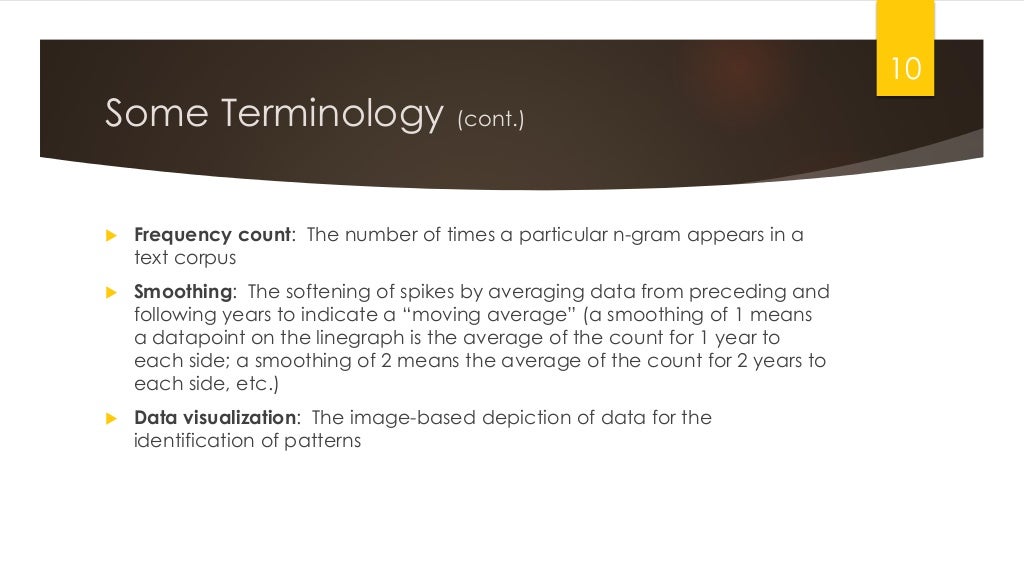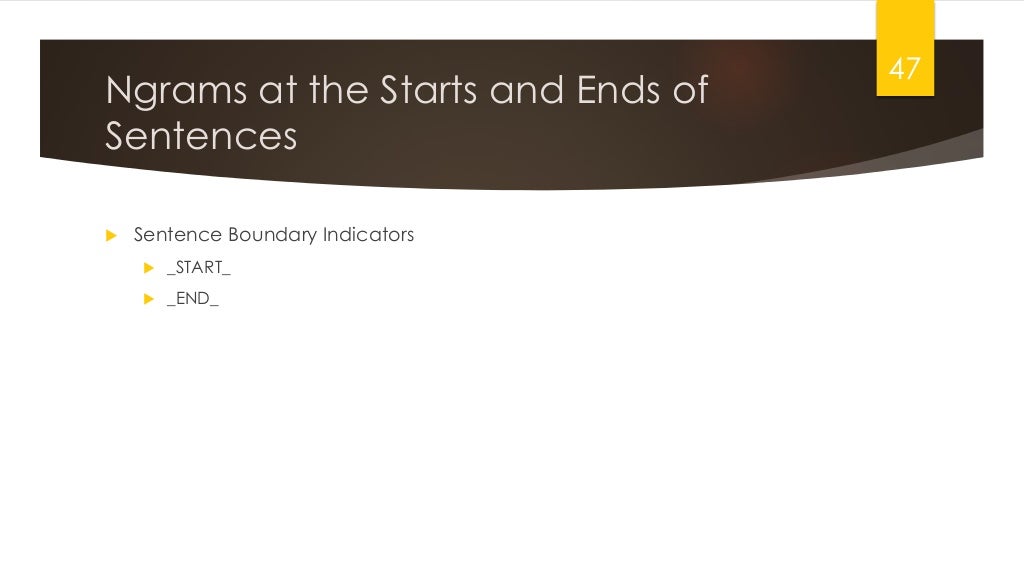
So things do not get scaled for circulation or popularity. Danforth, and Peter Sheridan Dodds have noted, the corpus only has one copy of each book in its dataset. The corpora for these options are pulled from the Google Books scanning project (to see similar visualizations of your own corpus, you could try working with Bookworm, a related tool). Our results would look a lot different depending on which corpus we selected. The Google NGram Viewer offers a dropdown menu where you can select a corpus to study. What is the corpus, or set of texts, being used to generate this data? The data we choose for a study can skew our conclusions, and it is important for us to think carefully about their selection as a part of the process. While these are fairly stark examples, the same principle holds true: the input affects the output. It would probably look quite different! The same would hold true if we targeted only biology, botany, and physics textbooks over the same time period. Imagine running the same word search for 'science' and 'religion' over 1000 texts used in religious schools or services. With any large-scale text analysis like this, the underlying data is everything. But not so fast: what is actually being measured here? We need to ask questions about a number of pieces of this argument, including ones regarding: The steady increase of usage of the word science over the last 200 years accompanied by the precipitous decline of the word religion beginning in the mid-nineteenth century could provide concrete evidence for what might otherwise be anecdotal. Looking at the graph, one could see evidence for an argument about the increasing secularization of society in the last two centuries. If we search on 'science' and 'religion,' for example, we could draw conclusions about their relative importance at various points in last few centuries. The tool allows you to search hundreds of thousands of texts quickly and, by tracking a few words or phrases, draw inferences about cultural and historical shifts. You can specify a number of years as well as a particular Google Books corpus. Provide a word or comma-separated phrase, and the NGram viewer will graph how often these search terms occur over a given corpus for a given number of years. The Google NGram Viewer provides a quick and easy way to explore changes in language over the course of many years in many texts. Ngram Viewer graphs and data may be freely used for any purpose, although acknowledgement of Google Books Ngram Viewer as the source, and inclusion of a link to, would be appreciated."Ĭopyleft 2014-15.The Google NGram Viewer is often the first thing brought out when people discuss large-scale textual analysis, and it serves nicely as a basic introduction into the possibilities of computer-assisted reading. I'd like to publish an Ngram graph in my book/magazine/blog/presentation. Proceedings of the 50th Annual Meeting of the Association for Computational Linguistics Volume 2: Demo Papers (ACL '12) (2012) Syntactic Annotations for the Google Books Ngram Corpus. Yuri Lin, Jean-Baptiste Michel, Erez Lieberman Aiden, Jon Orwant, William Brockman, Slav Petrov. We also have a paper on our part-of-speech tagging:
/ngram-viewer-screenshot-79d5bb8ab1fb4527ab327e4415bcef31.jpg)
Science (Published online ahead of print: ) Quantitative Analysis of Culture Using Millions of Digitized Books. Pickett, Dale Hoiberg, Dan Clancy, Peter Norvig, Jon Orwant, Steven Pinker, Martin A. Gray, William Brockman, The Google Books Team, Joseph P. Jean-Baptiste Michel*, Yuan Kui Shen, Aviva Presser Aiden, Adrian Veres, Matthew K. If you're going to use this data for an academic publication, please cite the original paper:

"I'm writing a paper based on your results. When you opened it, type in the word (you can also type word combinations and names) then press Enter. Sometimes words become obsolete rapidly in such cases, to have a better word choice it's better to use a Synonym. As someone who speaks English as the second language, my personal purpose of using Ngrams has been checking the new words I'm learning. What this tool does is just connecting you to "Google Ngram Viewer", which is a tool to see how the use of the given word has increased or decreased in the past.
#BOOKS NGRAM VIEWER CODE#
The code could not be any simpler than this. No data would be collected from you by the extension. This tool does not require any special permissions or something like that. You are more than welcome to contribute by suggesting code, sending feedback and etc. So I made this for my personal use thought somebody else might find it useful so I shared it. I couldn't believe something similar to this hasn't been made already.

*Beginning year can be set to 1500 or 1800 *Now you can compare phrases by separating them with comma

The changes in popularity of the words over the last centuries What's new in version 1.1:


 0 kommentar(er)
0 kommentar(er)
